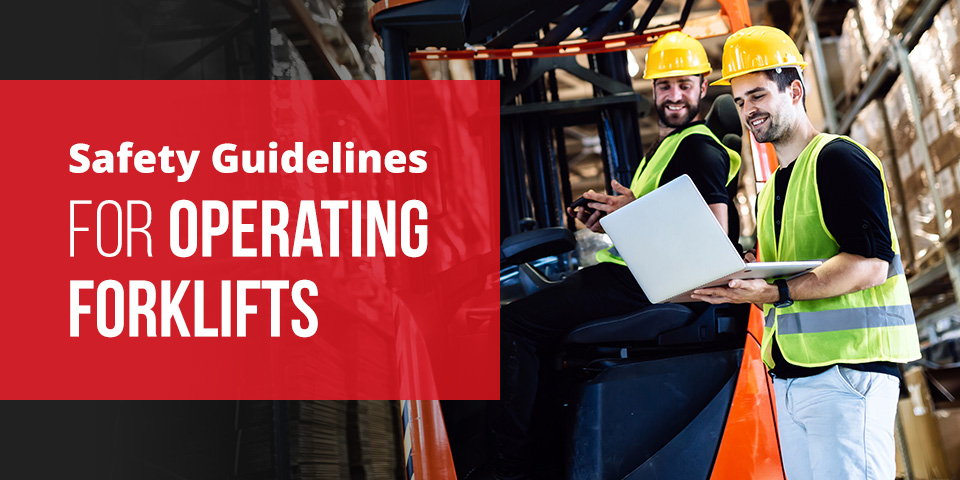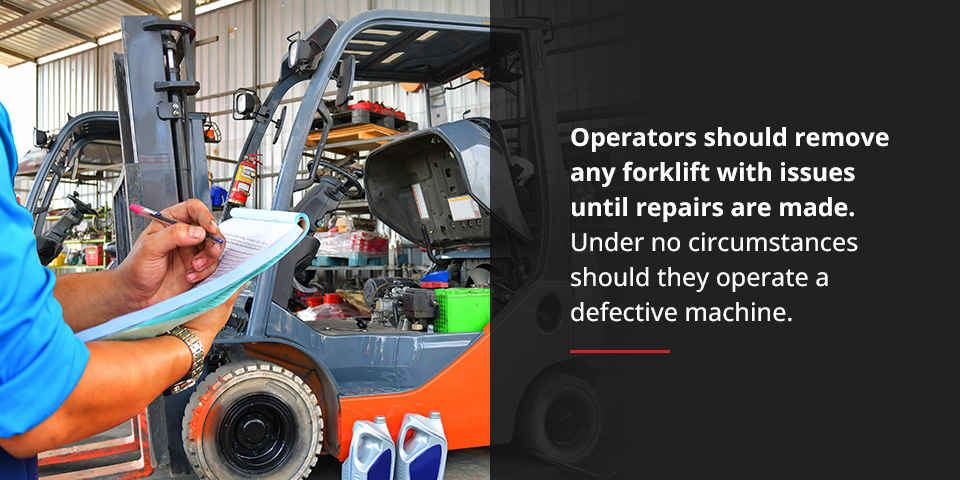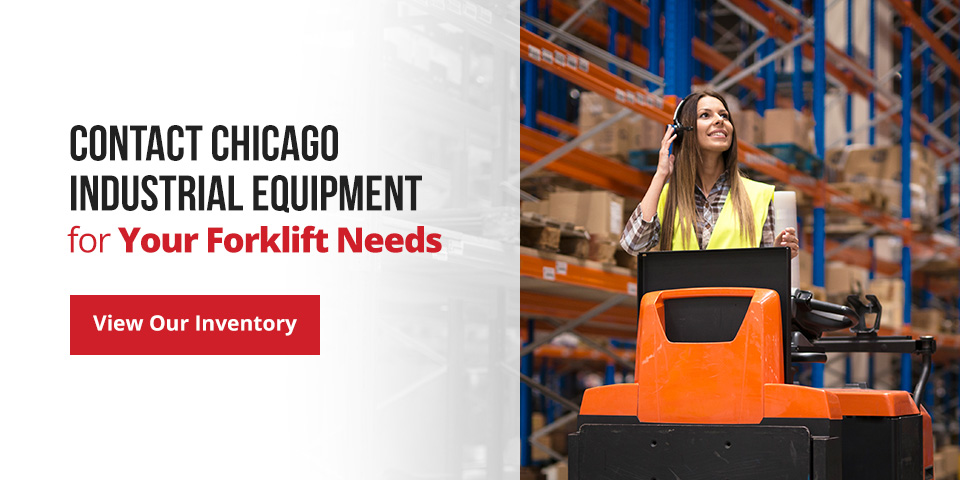Safety Guidelines for Operating Forklifts

Forklifts have many moving parts and a considerable amount of power. They’re common machines in warehouses and on job sites, though they require adequate training and compliance with safety standards to ensure operators use them properly.
Understanding the do’s and don’ts for forklift safety helps ensure the entire workplace remains safe. Whether you’re operating the forklift or training your operators on proper safety guidelines, there are numerous procedures to keep in mind.
Learn more about why forklift safety is important and what you and your operators can do to ensure you use these machines safely and properly every day.
The Importance of Forklift Safety
Operating any form of heavy machinery, like forklifts, without proper training or under the wrong circumstances creates a major risk. Forklift safety is a vital aspect of overall workplace safety. Here are some of the reasons forklift safety is important in the workplace:
- Reduces risk of accidents, injuries and fatalities: When forklifts are operated incorrectly, there’s a high risk of accidents, which can lead to injuries and even fatalities. Proper training and knowledge of forklift safety procedures help reduce the risk of these incidents to keep employees safe.
- Reduces downtime and improves productivity: When an incident occurs or part of the forklift malfunctions, your operation will likely face periods of downtime. Downtime, especially over extended periods, can be extremely costly. When operators know forklift safety, they can prevent downtime, and you’ll likely see an improvement in productivity.
- Improves operator confidence: Forklift operator training can help improve confidence within operators. Training helps ensure everyone’s on the same page and has the same safety expectations. When operators are up to date on the latest training, they’ll feel more confident in their roles, which leads to higher overall safety.
- Prevents breakdowns and malfunctions: Safely operating forklifts ensures they’re being operated correctly. The risk of the machine malfunctioning or breaking down is significantly increased when heavy equipment is used outside its limitations or not according to the manufacturer’s intentions. To prevent these issues, ensure every operator knows how to drive a forklift safely.

Forklift Safety Guidelines
If you’re wondering how to improve forklift safety, start with training. You and your operators should be aware of many aspects of forklift training. At the very least, establish a few key forklift safety rules they need to follow above all else. Consider starting with some of these guidelines:
1. Inspecting Your Forklift
The Occupational Safety and Hazard Administration (OSHA) requires operators to inspect forklifts daily before they can use them. Pre-shift inspections ensure the forklift is in operating condition. Inspecting your forklift can greatly reduce the risk of injury and breakdowns while on the job, as well. Inspections even help you identify small issues before they require costly repairs.
Proper inspections include a walk-around inspection and a seated inspection. First, forklift operators should walk around the forklift to check tires, belts, chains, hoses, fluid levels, engines, forks, data plates and other components. If the forklift passes these checks, the operator should sit in the forklift and, while it’s running, check the fuel level, warning lights, gauges, controls, brakes, safety lights, horn and steering and listen for abnormal noises. If all is clear, the forklift is ready for use.
Operators should remove any forklift with issues until repairs are made. Under no circumstances should they operate a defective machine.
2. Operate Your Forklift at a Safe Speed
While forklifts are relatively limited in speed, their weight and heavy loads can easily cause them to be unsafe at certain speeds. One of the most essential OSHA forklift speed regulations states that operators should only drive forklifts at speeds that would allow the machine to stop safely. OSHA also indicates that operators must slow forklifts down when turning to allow for smooth, safe turns.
Employers can determine safe speed limits per their specific worksites and encourage safe forklift speeds with speed bumps, speed limiting devices, speed alarms and other tools that enforce speed limits.
3. Follow the Forklift Load Weight Capacity
Every forklift has a manufacturer-recommended load weight capacity. Certain forklifts can carry heavier loads than others, so it’s important to use forklifts intended for your needs. To use your forklift safely, you should only carry loads within the rated capacity. You’ll find these numbers in the owner’s manual and on the data plate.
When considering the load capacity, it’s also important to remember the load center. While a load may be within the capacity, if it isn’t centered on the forklift, the weight can cause the forklift to tip forward. Be sure to carefully think about these factors to ensure forklift safety.
4. Be Aware of Pedestrians and Keep Proper Distance When Working
When operating any heavy machinery, it’s crucial to stay aware of your surroundings. Watch for pedestrians who may not hear the forklift coming — for example, honk when driving through intersections. If you or your forklift operators are driving behind other forklifts or equipment, maintain a safe distance. The safe distance between machines is the length of three forklifts. This also equates to at least 20 feet or the three-second rule when driving.
Maintaining a safe driving distance allows the operator enough time to break and prevents collisions with other machines or pedestrians.
5. Wear Proper Clothing When Operating a Forklift
Wearing proper clothing helps prevent accidents and injuries. Forklift operators should avoid loose clothing to prevent it from getting stuck in the machine. Operators should always wear high visibility jackets, hard hats and safety shoes. Additionally, keep your hands free of grease and other substances during operation to prevent losing control of the forklift controls.
6. Keep Limbs Inside the Forklift
Much like other heavy equipment and machinery, it’s best to keep your head, arms, hands, feet and legs inside the forklift at all times. Sticking your limbs out of the machine puts you at risk of serious injury. Forklift operators should always use the restraint system or seat belt when using the machine.
Contact Chicago Industrial Equipment for Your Forklift Needs
Today’s forklifts are made with safety in mind, helping you begin preventing accidents in the workplace from the moment you purchase a new forklift.
Whether you’re looking to save money with a used forklift or take advantage of the newest designs and advancements, Chicago Industrial has an extensive forklift inventory for you to browse. With multiple financing options and fast shipping, we’re here to get you the forklift that will meet your requirements.
Explore our inventory of forklifts and other industrial equipment. Contact us with any questions or for more information!


